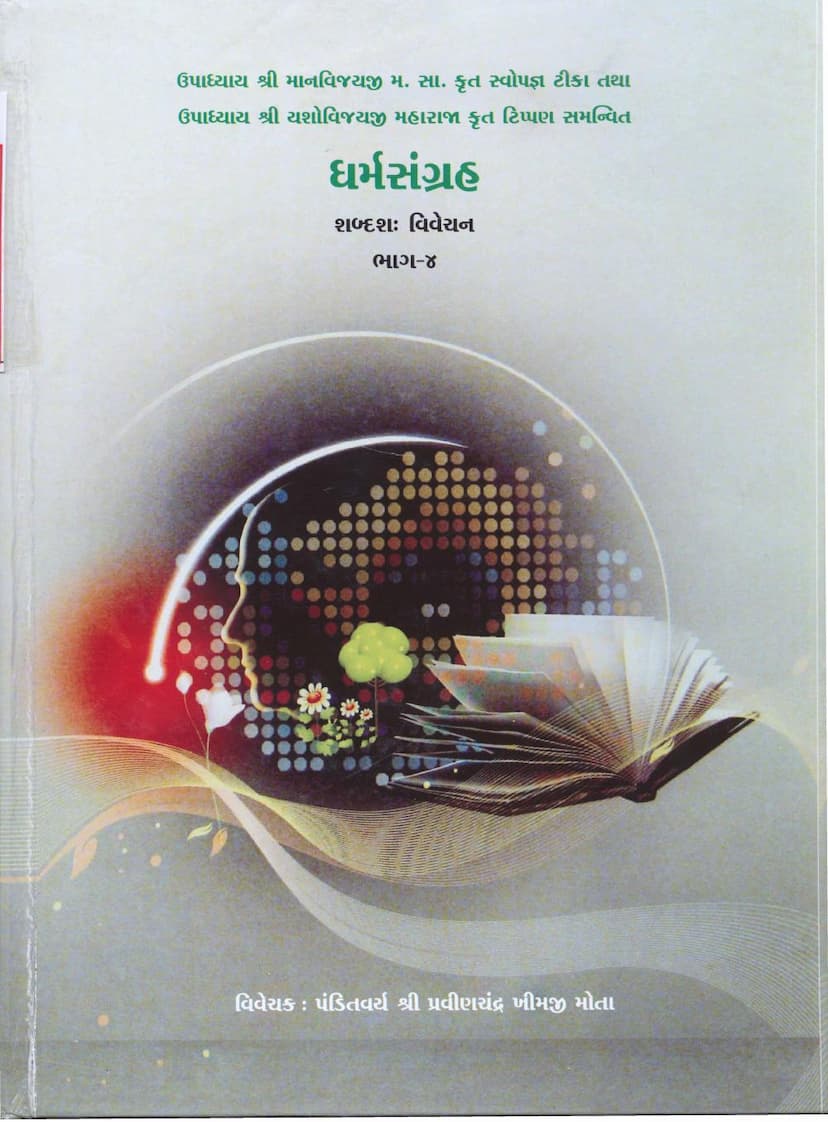Dharm Sangraha Part 04
Added to library: September 1, 2025

Summary
This document is the fourth part of the book "Dharm Sangraha: Shabdash Vivechan" (Religious Collection: Word-by-word Exposition), authored by Panditvarya Shri Pravinchandra Khimji Mota. It is published by Gitarth Ganga. The text is a detailed, scholarly commentary on the original work by Upadhyay Shri Manvijayji Maharaj, with additional notes by Upadhyay Shri Yashovijayji Maharaj.
The book focuses on the daily routine and religious practices of a devout householder (Mahashravak) according to Jain philosophy. It delves into the intricacies of waking rituals, chanting (Jap Vidhi), the nature of spiritual awakening, morning duties, renunciation (Pratyakhyan), the timing of Pratyakhyan, and the five types of Chaityas (Jinalayas).
A significant portion of the text is dedicated to the detailed exposition of Jin Pujan Vidhi (Worship of the Jina idols), including:
- Snan Vidhi (Bathing Ritual): Describing the process of bathing the idols, the appropriate water, materials, and the importance of purity.
- Vastra Vidhi (Clothing Ritual): The procedures for dressing the idols.
- Pujan Vidhi (Worship Ritual): Detailed steps for the actual worship, including the use of various substances like flowers, offerings, incense, lamps, and scriptures. It explains the significance of different types of worship and the correct manner of performing them.
- Chaitya Vandan Vidhi (Salutation to the Shrine): A thorough explanation of the various forms of Chaitya Vandan, including the meaning of the mantras recited and the proper posture and devotion required.
The text emphasizes the spiritual benefits of these practices, explaining how they lead to the accumulation of merit, purification of the soul, and ultimately contribute to the path of liberation. It clarifies the meaning of various Jain scriptures and verses related to these rituals, providing a deep philosophical understanding of the householder's religious duties.
The book also touches upon the concept of Dharma (Religion) itself, defining it etymologically as "that which upholds." It categorizes Dharma into Sadhudharma (monk's path) and Shravakdharma (householder's path) but also acknowledges the variations based on individual circumstances and stages of spiritual progress.
The author acknowledges the profound influence of various revered Acharyas and Munis whose teachings and works have guided this compilation. The book is presented as a means to uncover the profound secrets of Jainism through the collected wisdom found in various scriptures, resolving apparent contradictions, and presenting them in an accessible manner through lectures by Acharya Shrimad Vijay Yugbhushan Surishwarji Maharaj.
The overall tone is devotional and scholarly, aiming to provide a comprehensive and accurate understanding of Jain religious practices for the benefit of the Jain community.